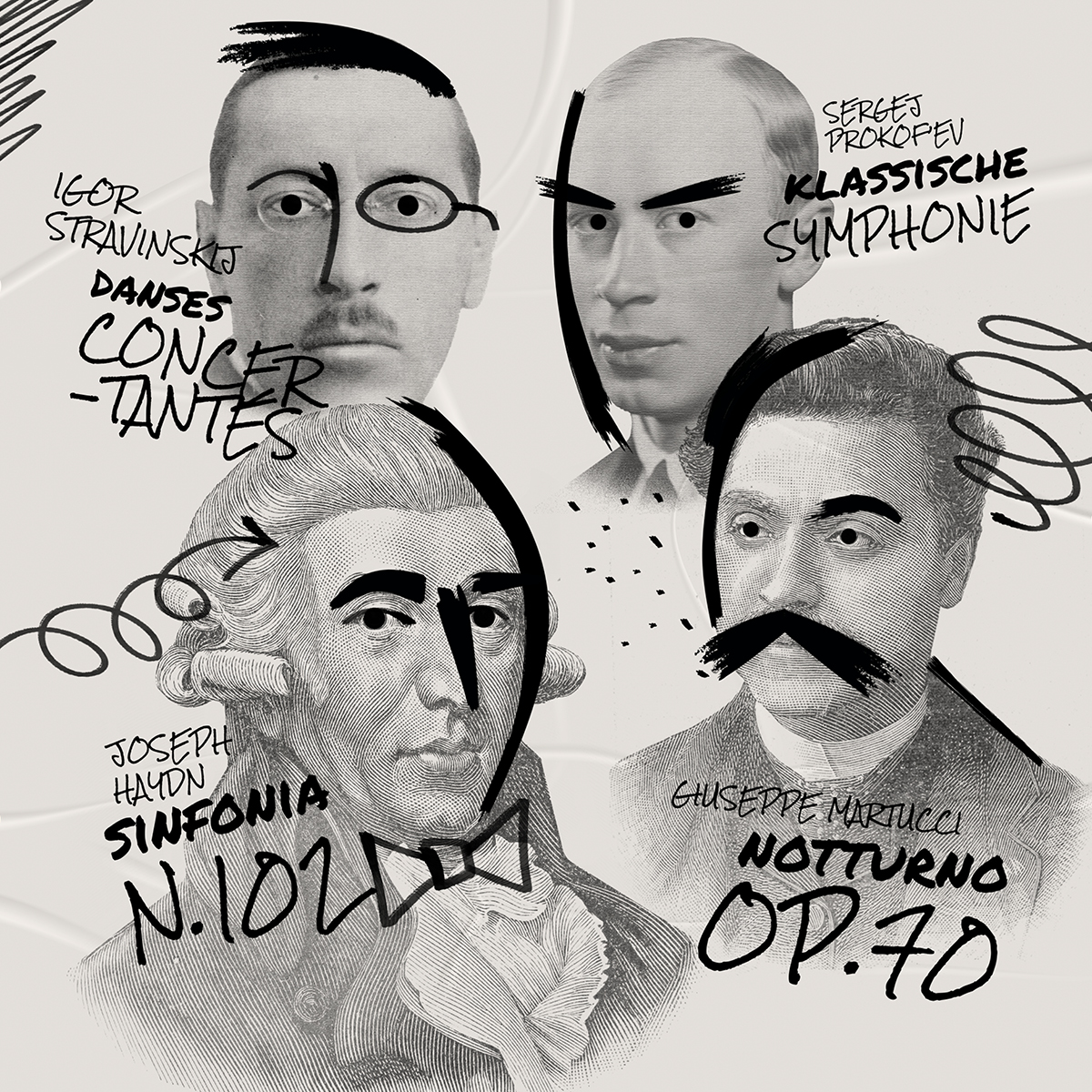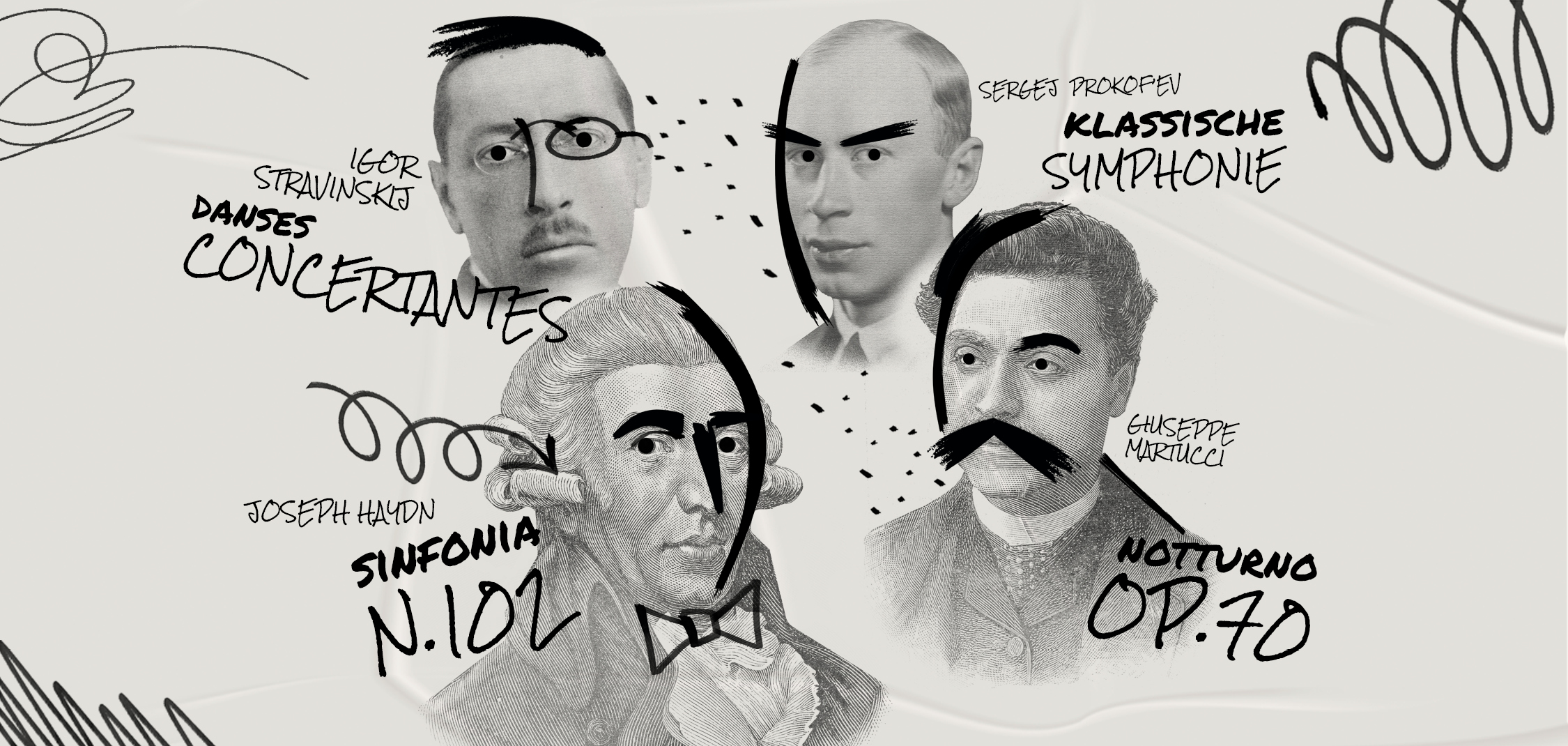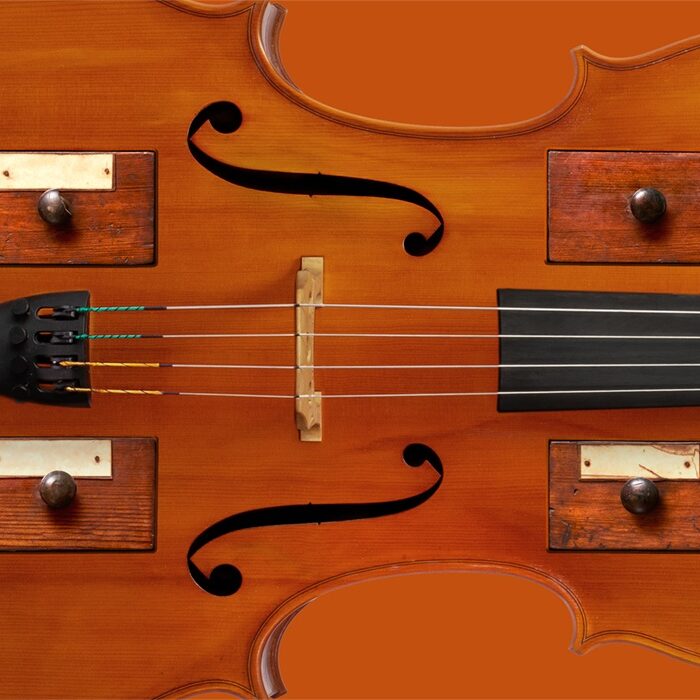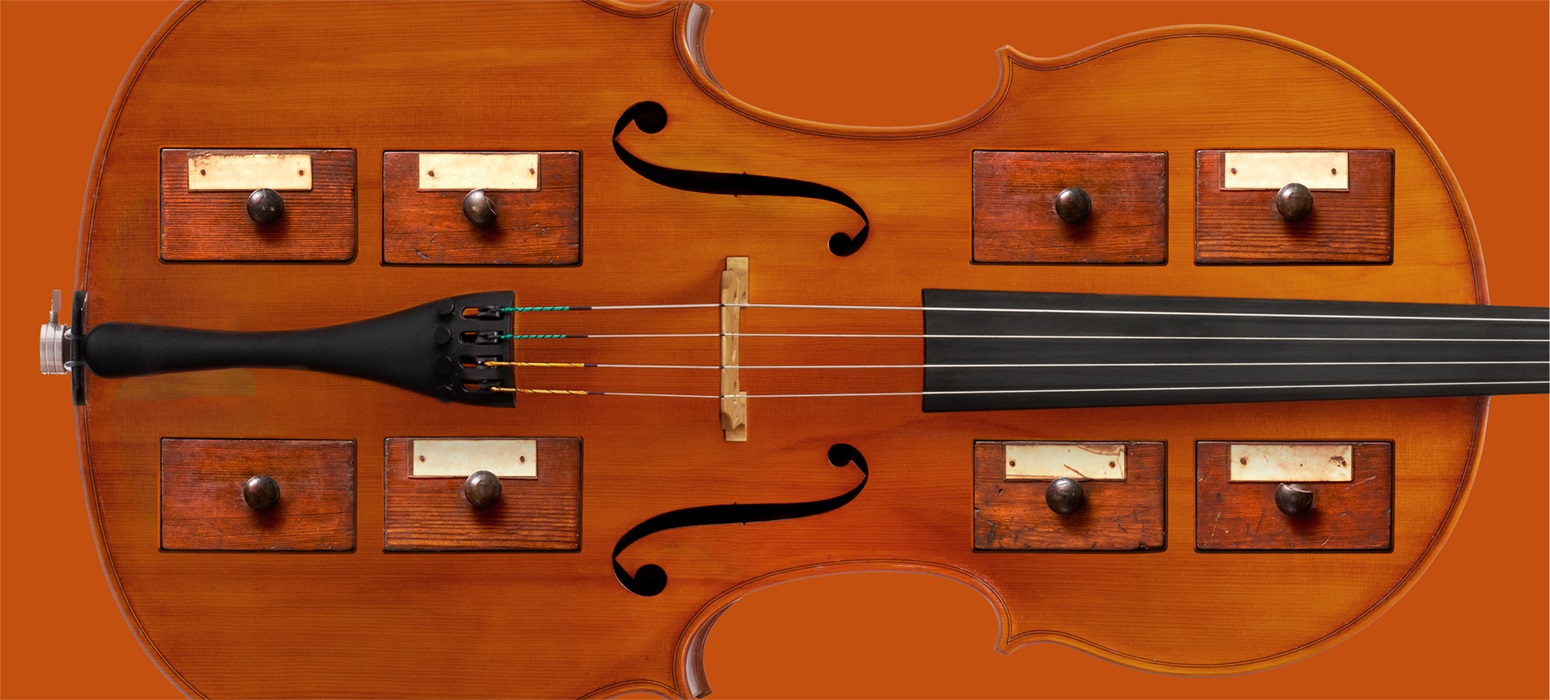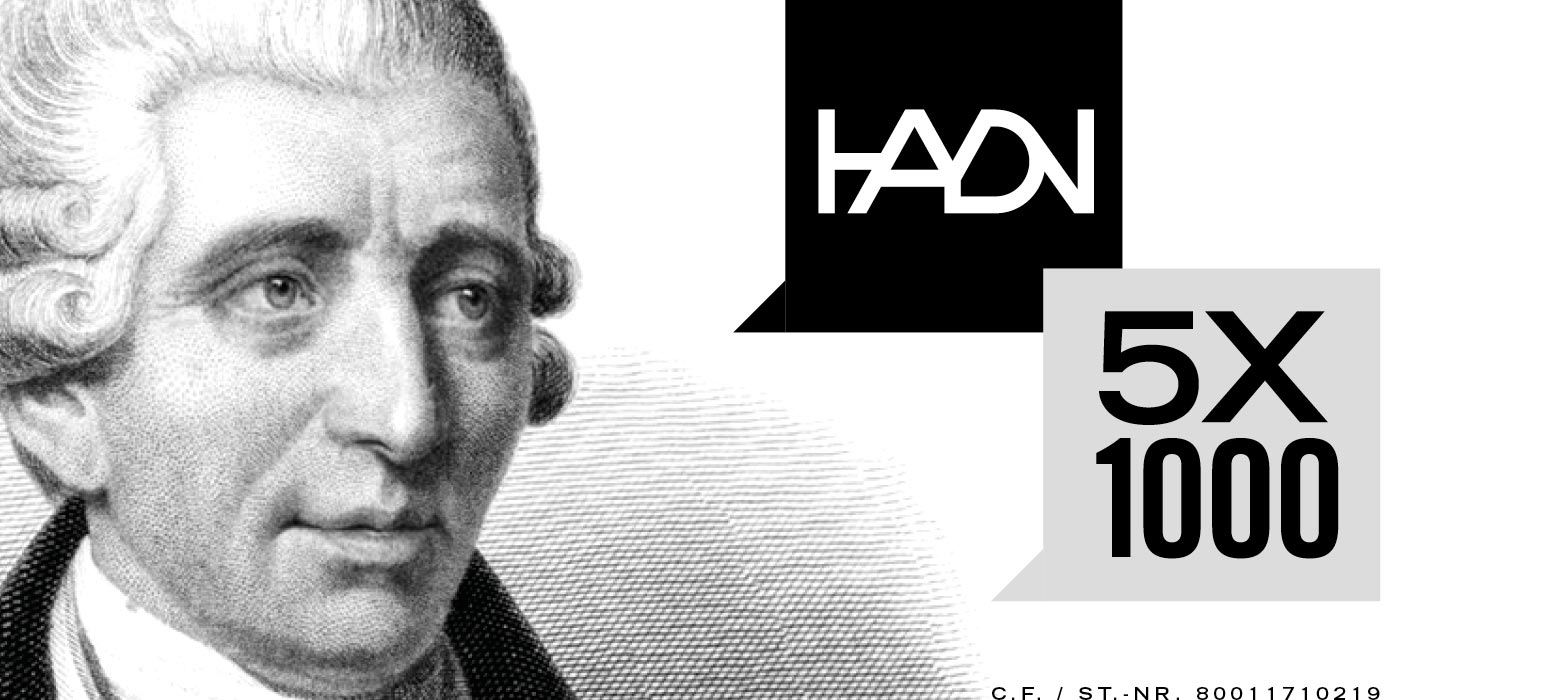What better way to open a new century: Giuseppe Martucci’s Notturno was originally written in 1891 for piano, then orchestrated by the composer in 1901. In February 1795, after the first performance of the Symphony No. 102, the audience crowded in front of the stage at London’s King’s Theatre to catch a glimpse of Haydn. “And just at the moment when the seats in the middle of the parterre had emptied, the majestic chandelier came crashing down,” reported Albert Christoph Dies in his Biographical Accounts of Joseph Haydn. The incident, which fortunately caused no casualties, was long associated with the premiere of the Symphony No. 96, which thus entered music history with the nickname “The Miracle.”
Restoration rather than revolution? In 1942, only a few months after the United States entered the Second World War, Stravinsky conducted in Los Angeles the premiere of his neoclassical Danses Concertantes, which are in fact a ballet suite. In 1916, in the midst of another world war, Prokofiev set out to compose a symphony “in the classical style.” “If Haydn were still alive, so I thought, he would keep his own style of composition and add something new.” That is exactly what he did. His first contribution to the genre is not a copy, but rather a refined stylistic transposition of Haydn’s symphonic concept into the early 20th century.
